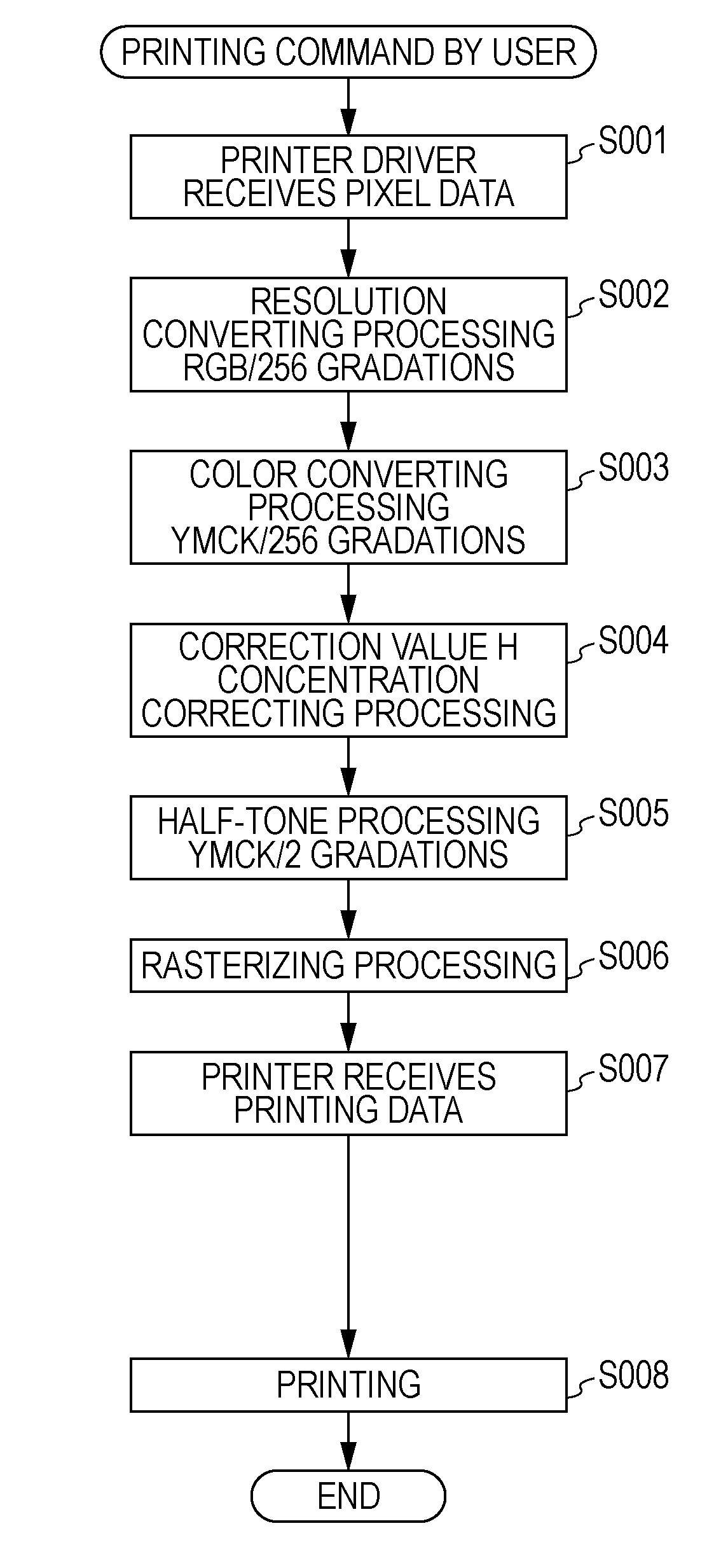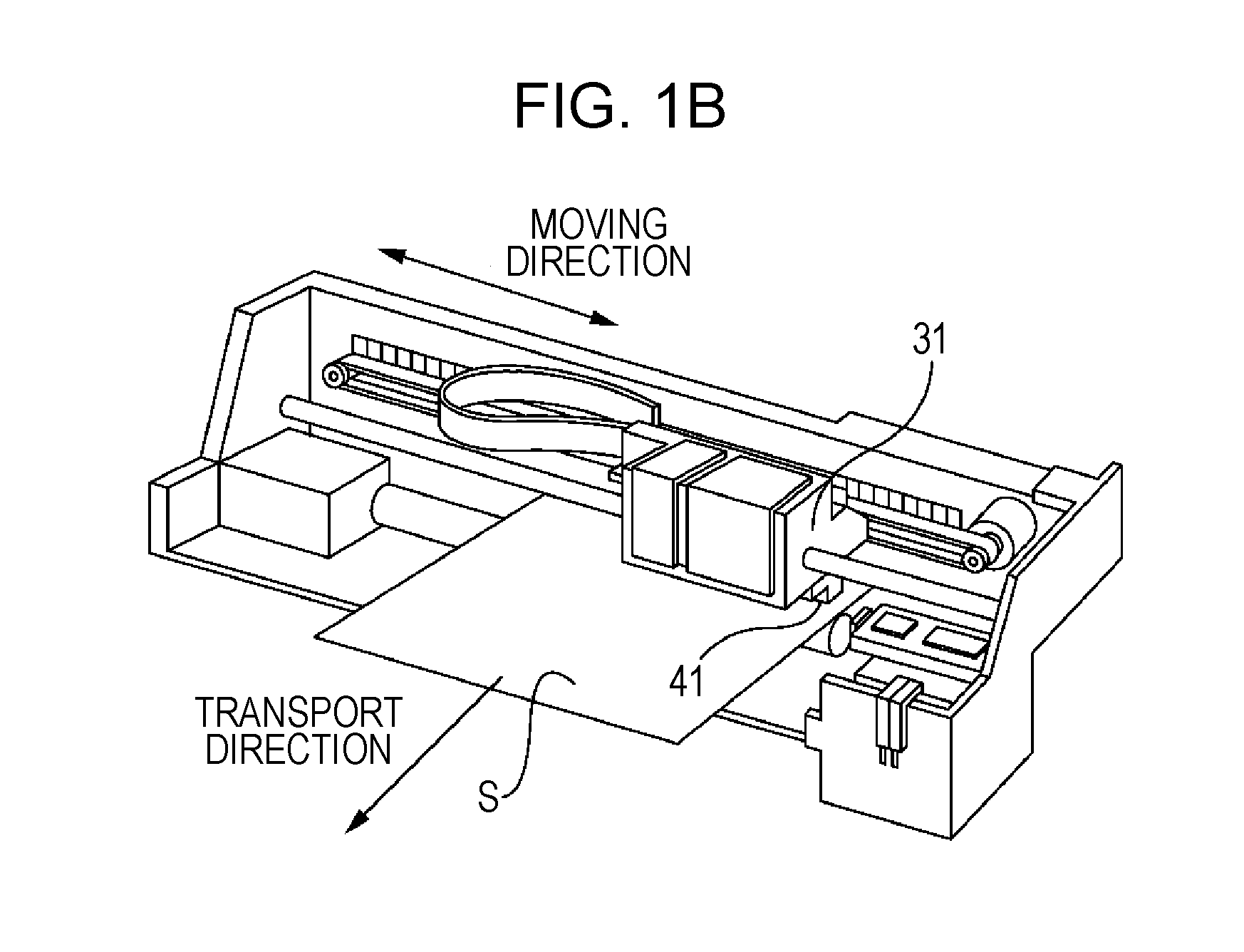Fluid ejecting apparatus and method of correcting pixel data
- Summary
- Abstract
- Description
- Claims
- Application Information
AI Technical Summary
Benefits of technology
Problems solved by technology
Method used
Image
Examples
example 1
[0109]In Example 1, the process of correcting concentration of pixel data of 4 gradations that is half-tone processed by other program is performed using a correction value H stored in the memory 13 of the printer 1. However, this correction value H (hereinafter referred to as “high gradation correction value H” that is a correction value corresponding to a high gradation value) is a correction value H that is used for the pixel data of 256 gradations when the printer driver performs the concentration correcting process (S004 in FIG. 11A). Even if the correction value H is to correct the pixel data of 256 gradations, the correction value for correcting the shading of the line regions that corresponds to the pixel data is not changed.
[0110]For example, in the case in which the pixel line data (i.e. a plurality of pixel data lined up in a direction corresponding to the moving direction on the data) of 256 gradations corresponding to a certain line region is corrected to a dense gradat...
example 2
[0131]FIG. 15A is a view showing the high gradation correction value H used in Example 2, and FIG. 15B and FIG. 15C are views showing a shape of correcting the pixel data of 4 gradations according to Example 2. As known from the table on the formation rate of the dots in FIG. 12A, the dots forming the image (an image of low gradation value) of low concentration has a lot of small dots, the dots forming the image of intermediate concentration has a lot of middle dots, and the dots forming the image (an image of high gradation value) of high concentration has a lot of large dots.
[0132]In particular, according to the table on the formation rate of the dots in this embodiment, the strapped pattern (FIG. 6B) of concentration 30% formed by the command gradation value Sa (first gradation value) is formed only by small dots (first dots), the strapped pattern of concentration 50% formed by the command gradation value Sb (second gradation value) is formed only by middle dots (second dots), an...
example 3
[0140]FIG. 16A shows a correction value for the pixel data of 4 gradations used in Example 3, and FIG. 16B is a view showing a shape of correcting the pixel line data in Example 3. In the above-described embodiment, the pixel data of 4 gradations from other program is corrected by using the high gradation correction value H (FIG. 9) stored in the memory 13 of the printer 1, but it is not limited thereto. New correction value H for 4 gradations may be set. The correction value H for 4 gradations is set for every line region (every pixel line data). Further, the correction value H for 4 gradations is set to densely print the line region which is visually recognized to be thin, and the correction value H is set to thinly print the line region which is visually recognized to be dense, thereby solving the unevenness in concentration more and more.
[0141]In Example 3, as shown in FIG. 16A, the correction value H is determined for every two pixel data (every the predetermined number of pixe...
PUM
 Login to View More
Login to View More Abstract
Description
Claims
Application Information
 Login to View More
Login to View More - R&D
- Intellectual Property
- Life Sciences
- Materials
- Tech Scout
- Unparalleled Data Quality
- Higher Quality Content
- 60% Fewer Hallucinations
Browse by: Latest US Patents, China's latest patents, Technical Efficacy Thesaurus, Application Domain, Technology Topic, Popular Technical Reports.
© 2025 PatSnap. All rights reserved.Legal|Privacy policy|Modern Slavery Act Transparency Statement|Sitemap|About US| Contact US: help@patsnap.com



